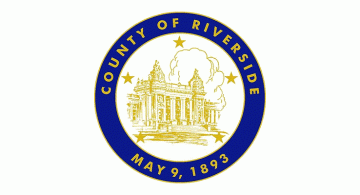Ontario Museum of History & Art Opens “Beyond Words: Visual Narratives From The Block Book to the Graphic Novel”

Ontario, Ca – We often think of the comic strip as a rather recent invention, but the history of sequential narrative begins with the history of art. Beyond Words: Visual Narratives from the Block Book to the Graphic Novel picks up this thread toward the end of the Middle Ages, when early book printers in the West used carved wooden blocks to stamp words and images onto the page. Because of their method of production, these books later came to be known as “block books.” Come join the Ontario Museum of History & Art’s exhibition of Beyond Words: Visual Narratives from the Block Book to the Graphic Novelopening Thursday, July 6, 2017 and running through Sunday, August 6, 2017.
New mechanical printing processes in the eighteenth and nineteenth centuries made books and printed pictures much more widely available than they had ever been before. As a result, artists produced humorous, satirical cartoons, and sequential art for serialized publication.
In the United States, comics first appeared in newspapers in the late nineteenth century. Newspapers attracted readership by recruiting popular cartoonists to draw comic strips, some of which were later syndicated nationally.
The comic book developed in the early twentieth century as a way to resell collections of newspaper strips, but the single-storyline comic book, devoted to a particular character, did not emerge until Superman became a hit in the late 1930s. This development allowed artists and writers freedom to expand stories and artwork beyond the single page.
While commercial artists were busy pioneering the first newspaper and magazine comics, a similar interest in sequential art was forming in the fine art world. Frans Masereel and Lynd Ward, two artists working in and around the Expressionist movement, translated their interest in the medieval woodcut into something entirely new: the woodcut novel. Other artists followed Ward and Masereel, and the genre flourished in the 1920s and 1930s.
Masereel and Ward are often cited by scholars as fathers of the graphic novel movement that started in the 1970s and 1980s with the work of Will Eisner, Art Spiegelman, and others. Before the 1960s, comics were seen as decidedly low-brow. In 1978, with the publication of Will Eisner’s A Contract with God, the perception of comics started to shift. It was a graphic novel, and although the term had been in use since the 1960s, A Contract with God established the genre.
Rather than presenting an evolutionary history of visual storytelling, the works selected for this exhibition allow us to situate woodcuts, engravings, comic strips, and graphic novels in a long tradition of word- and image-making, to consider the roles of image and narrative in our cultures, and to examine storytelling techniques in different media.
If a picture is worth a thousand words, then pictures and words together form an even more powerful tool for communication, expression, and story-telling than either would alone. Stories tell us who we are and where we’ve been; they provide a shared fount of experience that shapes and defines culture.
The works in Beyond Words are from the Rare Book Collection and the Comic Art Collection in the Division of Special Collections, Archives, and Rare Books at the University of Missouri Libraries. The exhibition was curated by Kelli Hansen, Librarian, University of Missouri Libraries, Special Collections and Rare Books, Columbia, Missouri, and organized by ExhibitsUSA, a program of Mid-America Arts Alliance.
Activities Conjunction with the Exhibition:
Print-Mania!
Saturday, July 22, 2017 (1 PM to 4 PM)
Explore Beyond Words, an exhibit about printmaking and comics. Participate in a docent-led tour of the exhibit and have fun with a mono-screen printing workshop led by Self Help Graphics & Art from Los Angeles, California! Free admission.
Comic Book Lecture and Workshop
Saturday, August 5, 2017 (2:00 PM to 3:30 PM)
Artist Javier Hernández, creator of El Muerto and co-founder of the Latino Comics Expo, presents his work and teaches participants how to plan, design and create a short comic book. Materials will be provided. Seating is limited. Reservations required. Free admission.
About ExhibitsUSA
This exhibition is toured by ExhibitsUSA, a national program of Mid-America Arts Alliance. ExhibitsUSA sends more than twenty-five exhibitions on tour to over 100 small- and mid-sized communities every year. These exhibitions create access to an array of arts and humanities experiences, nurture the understanding of diverse cultures and art forms, and encourage the expanding depth and breadth of cultural life in local communities. For more about ExhibitsUSA, email MoreArt@maaa.org or visit www.eusa.org.
About Mid-America Arts Alliance
Mid-America Arts Alliance (M-AAA) strengthens and supports artists, cultural organizations, and communities throughout our region and beyond. We achieve this primarily through our national traveling exhibition programs, innovative leadership development, and strategic grant making. We are especially committed to enriching the cultural life of historically underserved communities by providing high quality, meaningful, and accessible arts and culture programs and services. We believe in more art for more people. Additional information about M-AAA is available at www.maaa.org.
About The Ontario Museum of History & Art
The Ontario Museum of History & Art is located at 225 S. Euclid Avenue, Ontario, California 91762. Gallery hours are Noon to 4 PM, Thursday through Sunday. Admission is free. For more information call (909) 395‑2510, email at museuminfo@ontarioca.gov, or visit www.ontarioca.gov/museum. The Ontario Museum of History & Art is a public-private museum operated by the City of Ontario with support from the non-profit Ontario Museum of History & Art, Associates.
























